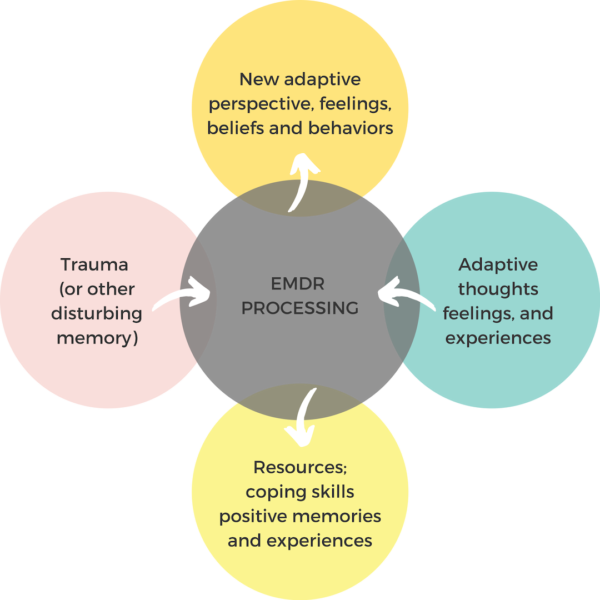EMDR
(Eye Movement Desensitization and Reprocessing)
What is EMDR?
Eye Movement Desensitization and Reprocessing (EMDR) is an 8 phase treatment approach to help alleviate symptoms related to trauma and/or adverse life experiences. Trauma gets stored in your body and can manifest in excessive ways . EMDR desensitizes the past events, body sensations and negative thoughts and works to instill more adaptive and healthy ones. EMDR works best with trauma, PTSD and anxiety to help resolve symptoms, change negative beliefs and break up patterns we can become stuck in. The goal of EMDR is to reduce how “heavy” memories feel and how distressing they are. EMDR is also very helpful in alleviating anxiety and panic attacks.
How does EMDR work?
When Adverse Life experiences occurs, information processing may be interrupted or incomplete. Your brain goes into survival mode so it can not think clearly. This prevents healthy and adaptive memory networks from forming. So, when the individual thinks about the trauma, or when the memory is triggered by similar situations, the person may feel like they are “reliving it”, i.e., experiencing strong emotions and physical sensations that push into present experiences.
An example is the intrusive thoughts, emotional disturbance, and negative self-referencing beliefs of post-traumatic stress disorder (PTSD). By targeting these trauma memory networks with EMDR therapy, the brain re-processes the previously dysfunctionally stored information and links it to other, more adaptive information. This process helps release and discard all unhealthy perceptions, emotions, and sensations to tend to want to hang around.

Neurofeedback
(EEG Biofeedback)
What is Neurofeedback?
Neurofeedback is a non-invasive, powerful tool that helps the brain learn to regulate itself. It is positive reinforcement of the brain where we “exercise” a brain to function more optimally. Neurofeedback can improve attention, focus and overall stress. It can help with cognitive impairments, mood, sleep and much more. Neurofeedback combined with therapy can help reach and make changes that talk therapy alone can not. It helps to reach the source of the problem(s) and correct dysregulations. Neurofeedback is a good option for individuals who don’t respond well to medication or choose not to take medication.
How does Neurofeedback work?
Sensors are placed on the scalp and ear and connect through an amplifier which shows us real time brainwaves on a monitor. Brainwaves all have a job to do. Some help us sleep (slow waves), some help us when we feel scared (fast waves) and some help us focus. If these become out of order or too distant from each other, problems arrive and we struggle with dysregulations and arousal concerns.
Initially, we collect info from looking at various locations. This gives us a baseline. Next, we play a game interacting with the computer where the brain is rewarded for what we want to do. For example, if a client is struggling with focus, we set the game to reinforce the brain when the client is focusing.
Changes typically occur by 10 sessions but reaching goals may require more sessions. It is suggested to have 2 neurofeedback trainings per week until goals are close to being met.
In October 2012 the American Academy of Pediatrics report on Evidence-based Child and Adolescent Psychosocial Interventions concluded that for Attention and Hyperactivity behavioral problems, Biofeedback was a “Level 1 Best Support” intervention, the highest level of support. (source)
What can I do to help to reinforce the benefits of Neurofeedback?

Therapy Services
Therapy can alleviate concerns with the following…
- ADHD
- Anxiety
- Depression
- Trauma and PTSD
- Sleep disturbance
- Sports anxiety and performance
- Agitation and irritability
- Behavioral concerns and school problems
- Poor coping
- Conflict
- Life transitions

